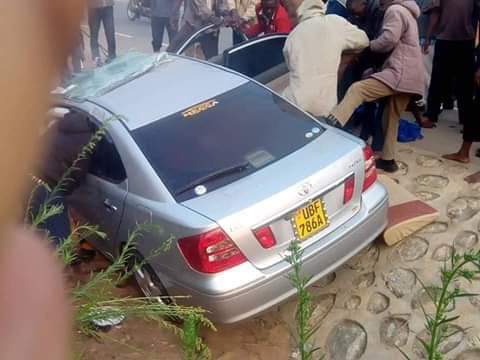
KAMPALA – How many times do you inspect your vehicle before setting off to your destination?
If you do, what is your usual checklist! Lights, brakes, side mirrors or the worn-out treads on your tires?
Many people do not mind the health of the car they are travelling in, especially when it comes to public means, as some passengers seem to be blown away and by the latest registration number plates of the vehicle. How mistaken they are!
Not all that glitters is gold. They seem to forget!
So, it looks like many people travelling on the road are actually not sure whether they will arrive safely. They are ignorant after all!
But life is too precious to play within a moving coffin. We are asking, could this be the alternative explanation for the rampant road accidents?
Road accidents claim over 9000 lives in Uganda according to research that was conducted by Makerere University College of Public health in 2019.
This figure almost triples the 3500 lives reported to be lost annually to road accidents according to the Police archives.
Either way, the figures are still very high given that the nation has a whole traffic police Directorate which is entrusted with maintaining road safety.
In 2018 alone, 13,244 accidents occurred around the country claiming multiple lives.
Over speeding, reckless driving or “the driver was drunk!” are the easily accessible explanations at the fingertips of the Police whenever an accident falls.
We all know that these are not always the right reasons. The police account is idealistically shallow; it cannot accommodate reasons like failures in braking or faulty indicators and defective car headlights.
Indeed Dangerous Mechanical Conditions (DMCs) should not be undermined at any time as we assess the root cause of road accidents.
What is a Dangerous Mechanical Condition (DMC)?
The Traffic and Road Safety motor vehicle Inspection Regulations 2016 defines DMC as “Where, upon completion of an inspection, the authorised person considers that the vehicle inspected if driven would be a danger to the public.”
However, the challenge is that the regulations fall short by failing to clearly explain what a vehicle considered to be of danger to the public is.
The Road and Safety Act 1998 provides a deeper insight of what the ideal condition of a vehicle fit for the road should be.
“No motor vehicle, trailer or engineering plant shall be used on a road unless the motor vehicle, trailer or engineering plant and all its parts and equipment, including tyres and lights, are in good repair and in efficient working order and are in such condition that the driving of the vehicle on the road either in the daytime or at night is not likely to be a danger to the persons traveling on the motor vehicle, trailer or engineering plant or to other users of the road,” reads the Act.

In order to meet the standards required for a vehicle to hit the road, one must acquire a Certificate of Fitness which is provided after inspection of the vehicle; and displayed on the car’s windscreen on the left-hand side.
The Traffic and Safety motor vehicle inspection Regulations2016 clearly state that: “No person shall not drive or permit to be driven a motor vehicle without a valid Certificate of Fitness displayed in accordance with these Regulations unless exempted under regulation 8.”
But how many vehicles in Uganda have this certificate?
Many defect automobiles move freely along the roads without inspection permission.
Shoddy vehicles with worn-out tyres lost indicators and headlights and very old brakes continue to loiter around the country claiming lives of innocent pedestrians, passengers and other road users.
Driving a DMC is punishable with a fine amounting to UGX 300,000 or two years of imprisonment as stipulated in the Traffic and Road Safety Act of 1998.
To everyone’s disappointment, such laws have not been enforced and so they hang redundantly gathering dust in the shelves serving no purpose to the nation.
Recently this year, the Uganda Police introduced the Express Penalty System where 1400 officers were trained on how to penalize faulty road users at instant in order to mitigate repeated road uncertainties.





